Written by: Linda Williams, DNR Forest Health Specialist, Woodruff, Linda.Williams@wisconsin.gov or 920-360-0665
Oak wilt symptoms are active right now, but so are several other oak issues that may be mistaken for oak wilt symptoms. Issues including Tubakia leaf spot, Botryosphaeria canker, kermes scale damage and mite damage are all causing problems and may be mistaken for oak wilt.
Oak Wilt Leaf Symptoms
Trees in the red oak group (those with points on their leaves) that became infected with oak wilt in the spring will suddenly start to drop their leaves in July and August. Trees that were infected later in the high-risk period (April 15 – July 15 in northern Wisconsin) may start to drop their leaves later, in September or even into October.
Leaves dropping from oak wilt trees can be fully green, tan or a water-soaked, greenish color away from the petiole (leaf stem). There will often be an area that is still green near the petiole, even though the leaf has fallen to the ground. Wilting leaves typically start near the top of the tree and progresses downwards.
Recommended control measures depend on if you have just one tree actively wilting (and no others have died in past years) or if you are dealing with established pockets that have been present for more than a year. Contact your regional forest health specialist to discuss these control options if you think you have oak wilt.
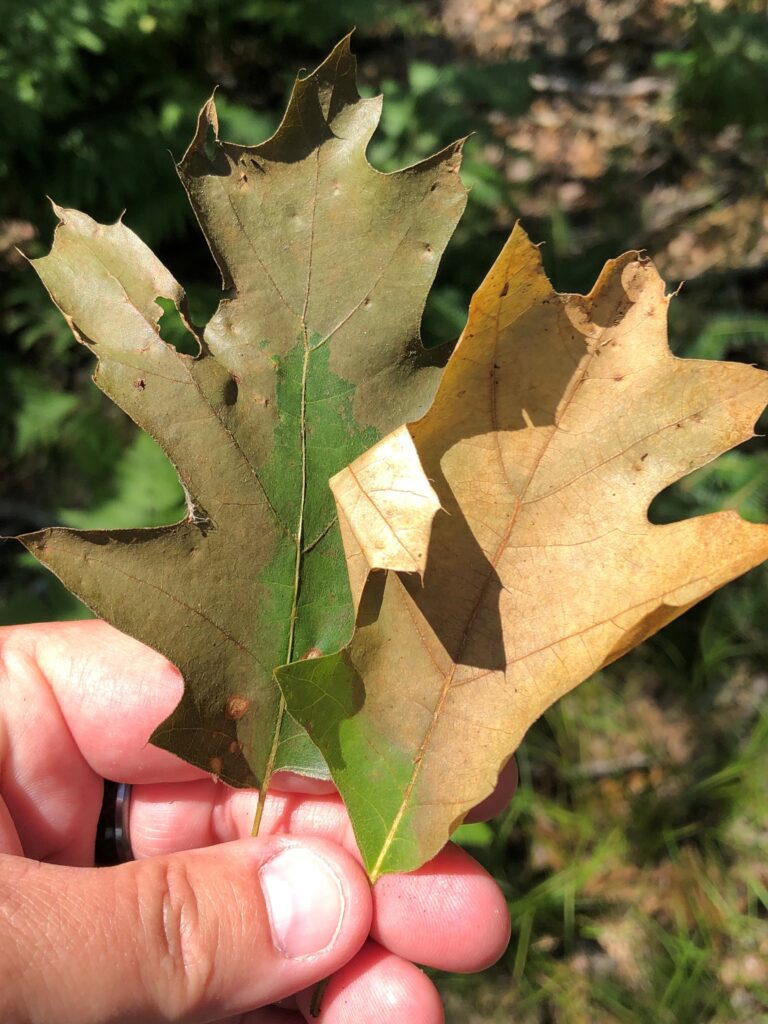
Leaves dropping from trees dying from oak wilt often are brown or water-soaked on the outer portions of the leaf with green still found near the base of the leaf. Photo Credit: Wisconsin DNR
Tubakia Leaf Spot
Tubakia leaf spot (Tubakia dryina) is leaf disease that is affecting trees in north-central Wisconsin this year. Symptoms are typically worse in the lower canopy. Leaves may drop and lower branches may lose nearly all their leaves or leaves on lower branches may be shriveled and brown. Branches at the top of the tree often still have green leaves, which is different than we see with oak wilt in which leaves often drop first from the top of the tree or the outer parts of branches. Leaves with Tubakia leaf spot have a different pattern of mortality on the leaf than what you see with oak wilt, with brown blotches and leaf curling. In urban areas, removing infected leaves can help reduce the amount of inoculum in an area. In forested areas, the lower branches may die, but it doesn’t typically kill the tree, so no management is necessary.
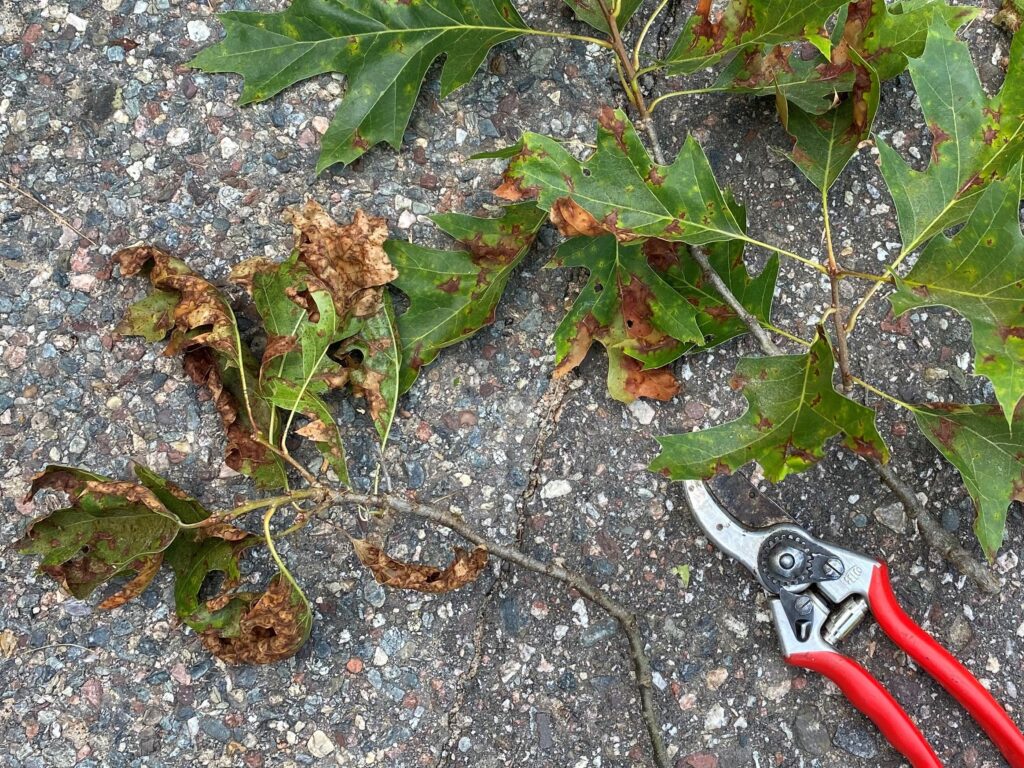
Tubakia leaf spot causes brown blotches and misshapen leaves. Photo Credit: Wisconsin DNR
Botryosphaeria And Kermes Scale
Botryosphaeria canker and kermes scale can cause similar looking symptoms. Both can cause the outer tips of branches to die where the leaves on those branches will turn tan/brown and remain attached. Branch tips killed by Botryosphaeria (Botryosphaeria sp.) will develop dark black fruiting structures that erupt from the twig or there may be a sunken canker, both at the base of the mortality. On the other hand, pin oak kermes scale (Allokermes galliformis) will have large, round, tan scale insects situated along the twig and at the base of leaf petioles. These scales can be a problem on younger red oaks but rarely cause problems on older trees. Both Botryosphaeria and kermes scale find it easier to attack trees that are under stress, so keeping trees healthy can help minimize problems with these two issues. Dead branch tips can be pruned out and disposed of.
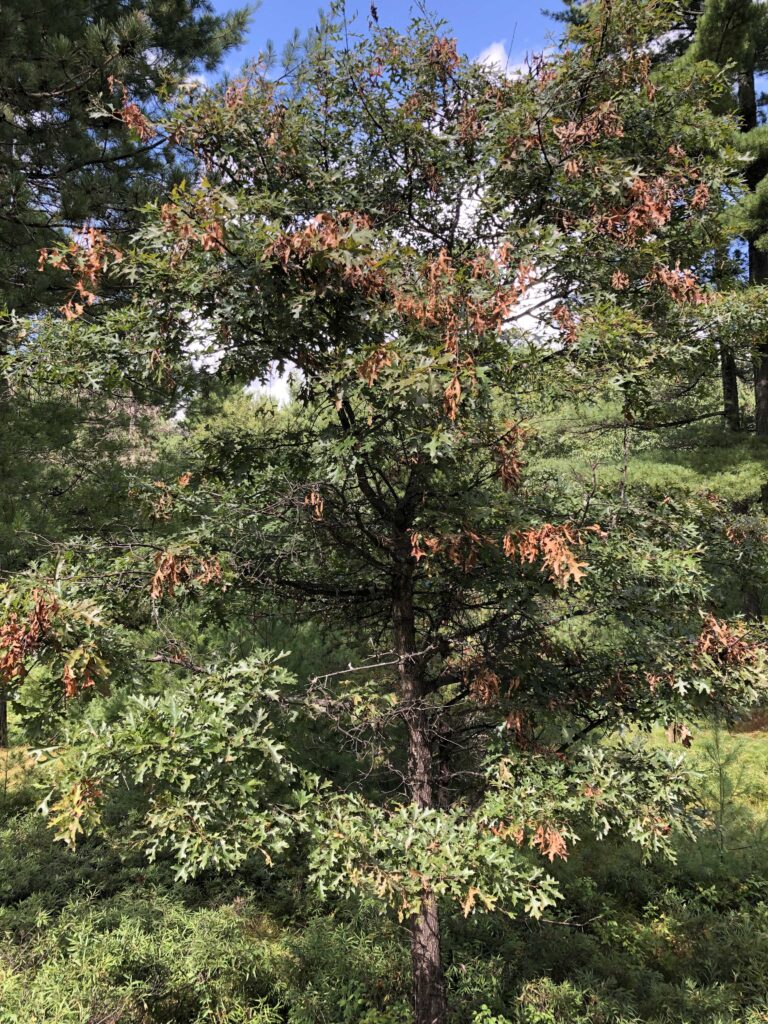
Branch tips killed by Botryosphaeria canker scattered throughout the crown of an oak tree. Photo Credit: Wisconsin DNR
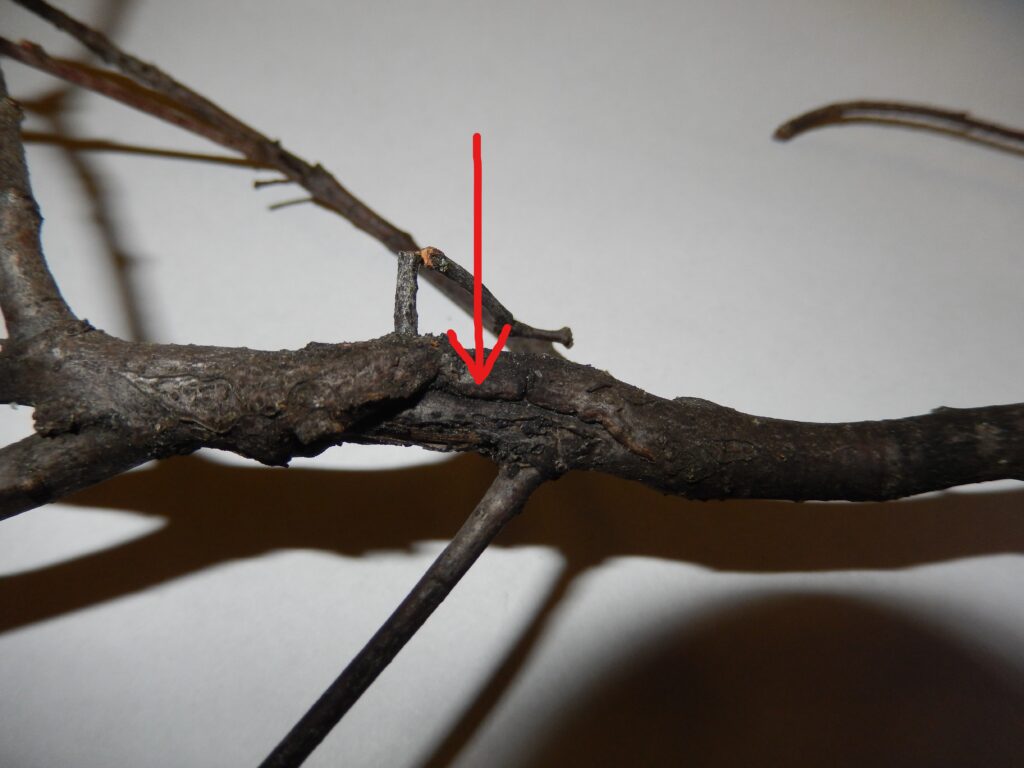
A sunken area on the branch indicates Botryosphaeria canker. Photo Credit: Wisconsin DNR
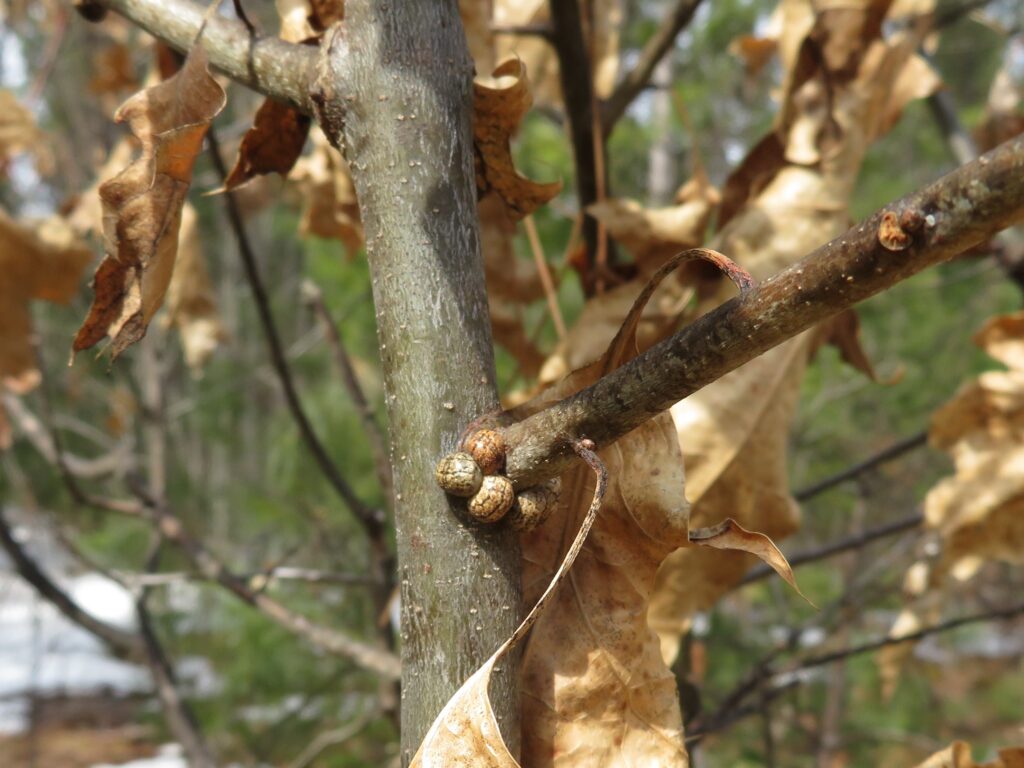
Round, tan-colored kermes scales are clustered at the base of the twig. Photo Credit: Wisconsin DNR
Mites
Oak leaves that have a tan appearance down the middle areas of the leaf, but leaves are remaining on the tree, are being damaged by mites. Mite populations are high in some areas of Vilas and Oneida counties. These mites insert their mouthparts into the leaf to suck the sap, which causes a small tan speck on the upper surface of the leaf. With high populations, the specks can coalesce to make the interior portions of the leaf tan in color.
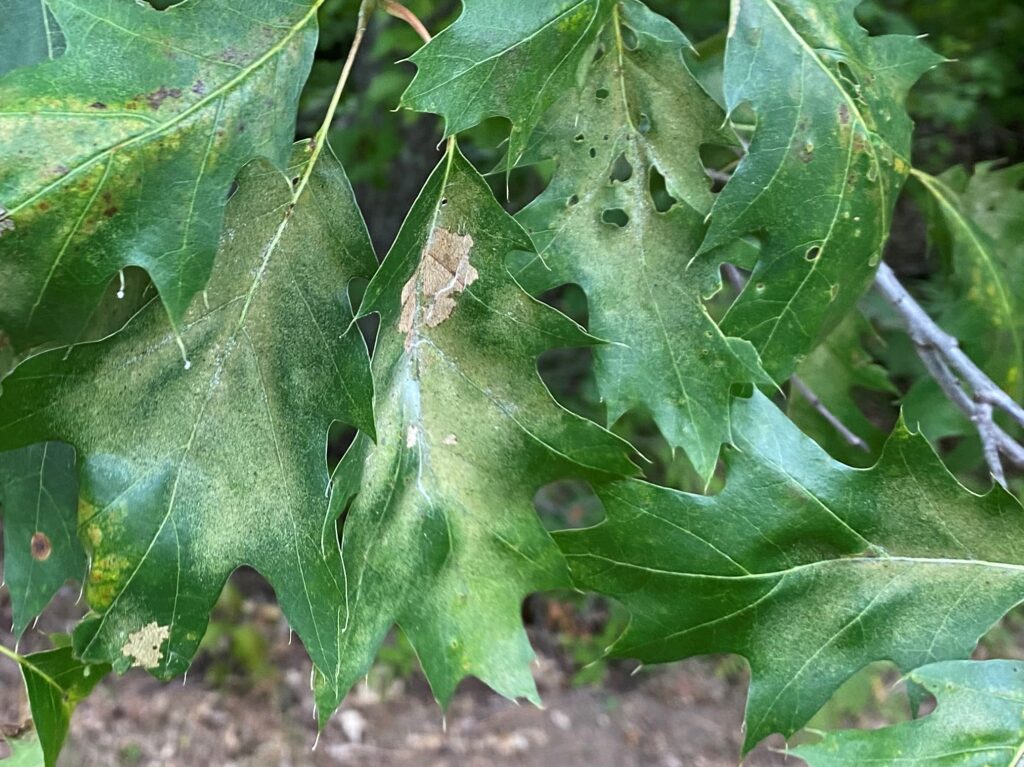
The pale color in the center portions of the leaves is due to feeding damage by high populations of mites. Photo Credit: Wisconsin DNR

A mite on an oak leaf. Note the tan areas on the leaf caused by feeding of many mites. Photo Credit: Wisconsin DNR
